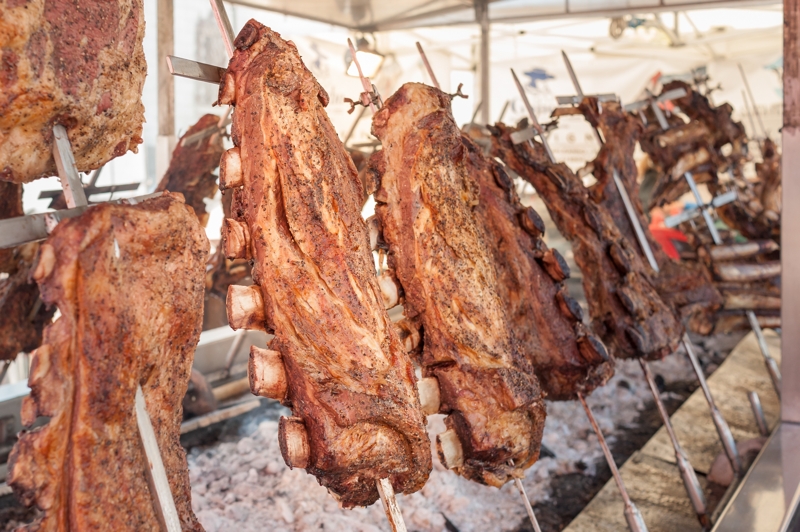Argentinian beef has earned a reputation for being some of the world's best. It's widely known for being incomparably tender and richly flavored, even though it's rarely seasoned with anything but salt. So what makes Argentine beef taste so good? The answer lies in the lifespan of the beef, from start to finish.
Grass-Fed on Las Pampas
When the Spanish first brought cattle to Argentina in the 16th century, Las Pampas must have looked like paradise to them. The 289,577 square mile prairie is seemingly endless and mostly flat, with a humid and temperate climate perfect for growing plenty of cow-friendly grass.
The many breeds of cattle introduced to Argentina thrived in the pampas, grazing happily and often, resulting in leaner, more flavorful and nutritious beef. Whereas most American beef is grain fed, the bulk of Argentinian cattle feed on the plentiful grass, resulting in more omega-3 fatty acids. That means Argentinian beef produces less risk of cholesterol or heart disease.
No Antibiotics or Growth Hormones
Cattle that are raised on grassy plains, eating grass, are much less likely to acquire or spread disease compared to the feed lot cattle of the United States, which are primarily fed grains such as corn. Therefore, they needn't be pumped full of antibiotics to stave off infections.
Cows aren't meant to eat corn, and when they do they become more susceptible to health problems. But the point of feeding them grains is to fatten them up as quickly as possible, which is why grain-fed beef is more likely to be pumped full of growth hormones too. Traditionally-raised pampas cattle aren't unnaturally rushed in this way, resulting in much higher quality meat.
Cut to Texture
In addition to the way Argentinian beef is raised, the way it's butchered contributes to its superior flavor. Argentine steaks are cut differently than in the rest of the world, and there's undeniable logic to it: the cuts are based on the texture of different parts of the cow. An entire cut of tenderloin, called Lomo, for example. Or the rib cap, tapa de asado.
So rather than have a single piece of steak with more than one texture — such as American T-bone or rib-eye — an Argentinian steak will remain consistent all the way through, cooking evenly, and often tender enough to cut with a spoon!
Slow Cooked Over Briquettes
The patience in raising Argentinian cattle also applies to the way Argentinian beef is prepared. Rather than being cooked quickly over a hot propane flame, Argentine steaks are let to cook slowly in a ceramic or stone grill called a parilla, fueled exclusively by wood or charcoal briquettes.
The high heat or the parilla cooks meat indirectly. Rather than being placed directly over the flame, the meat sits off to the side, where it slowly accrues a wonderful, smoky flavor as its internal temperatures rise. That's another reason Argentinian beef turns out so tender, despite having less fat. If you're ever in Little Italy, San Diego, come try Puerto La Boca!











